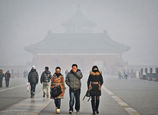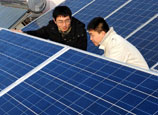
China imports large quantities of polysilicon and equipment for PV solar production from the US every year, which means it will hurt US manufacturers if Chinese companies suffer from the punitive tariffs and experience a reduction in equipment demand, said Gao Hongling, secretary-general of the China Photovoltaic Industry Alliance.
The way out
The Chinese government has made efforts to help the solar industry by expanding the domestic application of solar power plants and encouraging the distribution of solar power generation.
Starting in November, China's largest utility company State Grid began to provide a free service that allows PV solar power producers to connect to the national grid, a move considered "very encouraging" by industry experts.
"The biggest obstacle for China's new energy industry is the on-grid problem. The new policy will solve it to a certain extent," said Meng Xian'gan, deputy director of the China Renewable Energy Society.
According to the new policy, the State Grid branches at city level will have the rights to approve distributed solar power plant projects with installed capacities of less than 10,000 kilowatts each to be connected to the grid. Distributed solar power plants are self-supporting small scale units that have the ability to sell excess capacity to the grid.
Meng said the new plan shows the government's determination to support the domestic solar industry. It was echoed by the State Council's official statement of supporting distributed power generation on Dec 19.
Distributed solar power generation plays a major role compared with the integrated power generation in developed countries including most European countries, the US and Japan, according to Wang Sicheng, a senior researcher at the Energy Research Institute.


















 China's social trust index declined further last year, according to the Annual Report on Social Mentality of China 2012
China's social trust index declined further last year, according to the Annual Report on Social Mentality of China 2012


![]()
